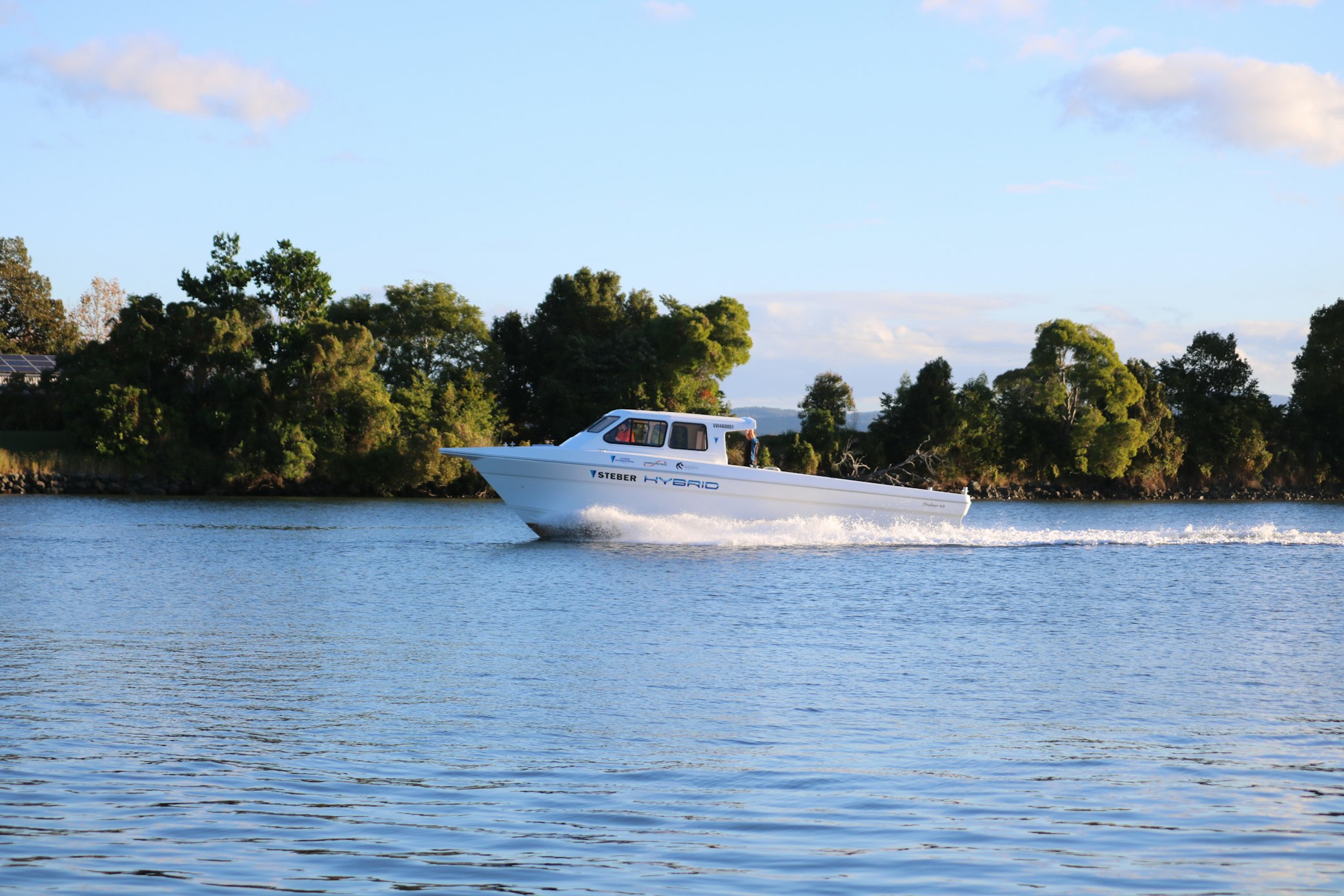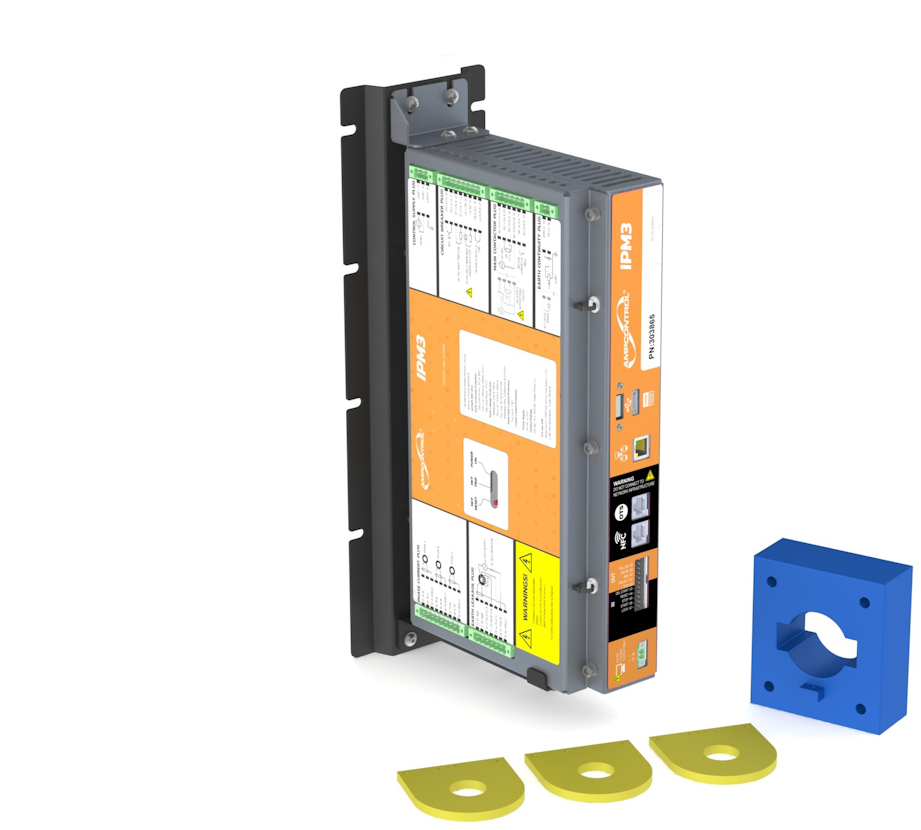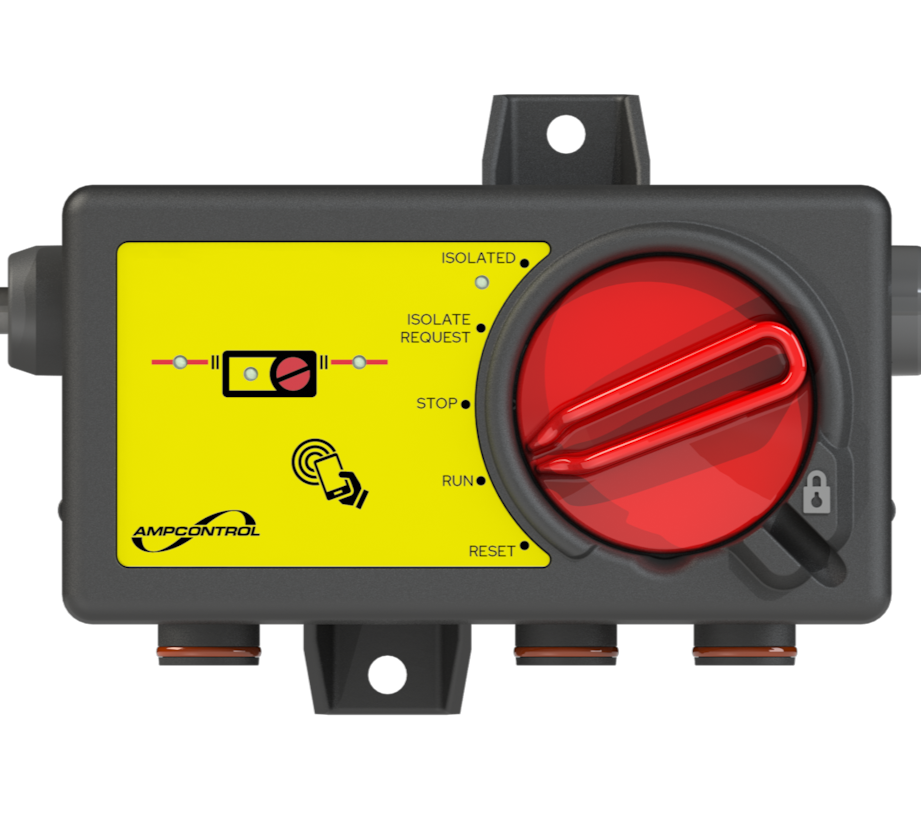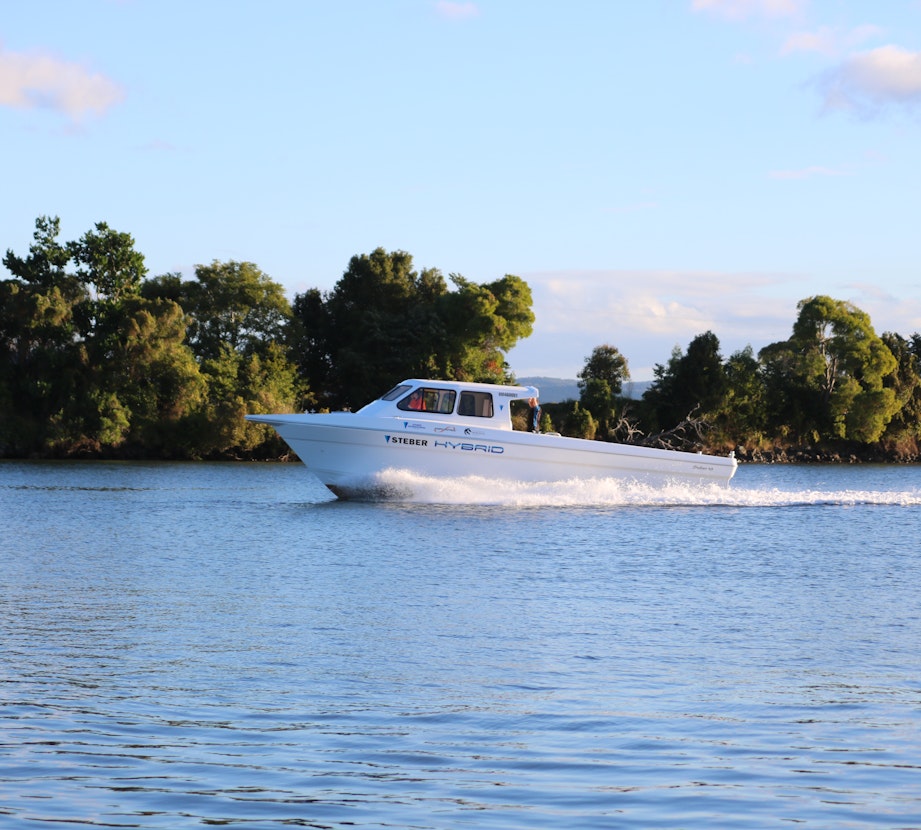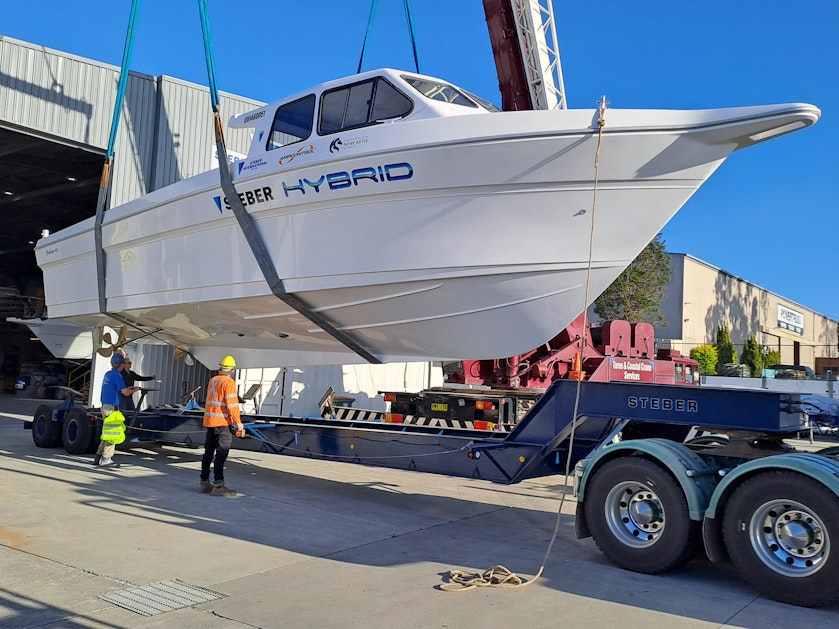
A marine plug-in hybrid power system to advance the decarbonisation of commercial and private vessels.
Background:
The original project idea was the development of a hybrid propulsion system that would facilitate low noise and low emission maritime operations, without suffering from operational range anxiety. In partnership with Steber International and the University of Newcastle, Ampcontrol developed a 22ft hybrid diesel-electric prototype vessel to demonstrate the feasibility of this idea. Off the back of a successful demonstration of the 22’ vessel, funding was approved for the development of a 43’ demonstration vessel that could be used to showcase the significant performance and economic advantages our hybrid power system technology has to offer to maritime operators such as Police, Navy and rescue services.
Solution:
Steber 43ft Hybrid vessel has a series hybrid topology that fully unlocks the electric powered propulsion. The power is delivered from the combination of an on-board battery system and a standard issue marine diesel engine re-vectored to drive a high-power density electric generator.
The propulsion system is comprised of two permanent magnet synchronous electric motors, rated for 300kW continuous power each, to direct drive the propellers. This does not only give an advantage of fly-by wire technology but also greater propeller torque and speed control. A specially designed docking mode lowers the propeller's speed while retaining full control of the control head operational range to ease navigation in closed waters and docking.
The currently installed 150kWh marine graded battery system allows the vessel to plane continuously on electric power only. Approximate electric propulsion range is:
4 knots = 12 hours
6 knots = 8 hours
8 knots = 3 hours
10 knots = 1 hour
20 knots = 0.5 hour
The closed loop isolated glycol liquid cooling circuits for all major electrical power system components allow for independent flow regulation, component redundancy and reduction of the pump sizes. The system has been tested with warm water temperatures ranging up to +33C, simulating vessel operation in locations such as Cairns, Darwin and Broome.
The Steber 43ft vessel is equipped with our Aware Marine remote monitoring software, which allows real-time position and status monitoring.
The modular and scalable nature of this marine electric power system facilitates the implementation of a tailored performance profile for both new and retrofitted vessels.
Steber Hybrid Specification
| Shipyard | Steber International |
| Country | Australia |
| Year built | 2023 |
| Hull | |
|---|---|
| Type | Commercial |
| Material | Fibreglass |
| Length | 43ft (13.1m) |
| Breadth | 15.6ft (4.7m) |
| Max passengers | Up to 20 + 2 crew |
| Cargo | Up to 2 tonnes |
| Power and Propulsion | |
|---|---|
| Type | Series Hybrid |
| Fuel | Diesel-Electric |
| Propulsion motors | Ampcontrol 2 x 300kW |
| Onboard engine/generator | Commercial diesel/Ampcontrol generator - 350kW |
| Onboard battery | Ampcontrol 300kW |
| Aux power | Ampcontrol 15kVA |
| Operational Performance | |
|---|---|
| Max speed | 27 knots |
| Economic speed | 15 knots |
| Planning mode | Electric/Diesel/Hybrid |
| Electric-only | 8 hours @ 6 knots |
| 1 hour @ 10 knots | |
| 0.5 hour @ 20 knots |
| Capacity | |
|---|---|
| Battery | 150kWh |
| Fuel | 200 - 1000L |
| Water | 100 L |
Outcome:
The Steber 43ft diesel-electric hybrid boat has shown notable economic and environmental benefits in comparison to its traditional diesel counterpart, aligning with the global trend of marine hybridisation.
The proposed hybrid power and propulsion system possesses a flexible nature, allowing us to tailor the capacity and power ratings of the onboard marine battery, as well as generation and propulsion to a diverse range of applications across the defence, government, and private sectors. The conversion of commercial vessels, including ferries, dredgers, tugs, and workboats, into hybrids, has globally showcased substantial benefits.
The notable benefits of the Steber 43ft diesel-electric hybrid boat are:
- Reduced operational costs
- Electric propulsion controllability
- Improved diesel engine efficiency due to constant operational point
- Emission, noise, and diesel vibration-free operation in electric mode
- Reduced CO2, NOx, and carcinogenic particulate emissions in hybrid mode
- Vessel future-proofing to meet the upcoming maritime decarbonisation needs.
